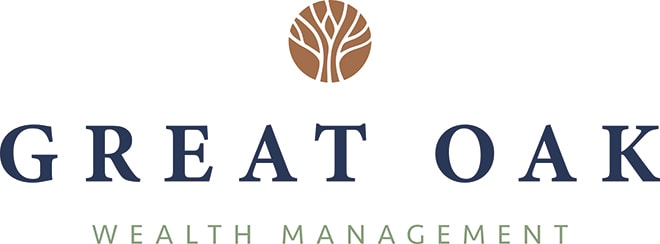Medical professionals are in a unique situation when they launch their careers. They, more often than not, are saddled with an overwhelming amount of debt. To complicate matters, they are then choosing where to launch their practices, while hopefully negotiating a healthy income. These early decisions will have repercussions on their families, their careers, and their wealth down the road.
Specialized career paths such as doctors and dentists require a sacrifice of time and costly education for a long-term payoff of helping patients and making a good living.
- The average cost of four years of medical school is $238,000, according to The Educational Data Initiative
- The average cost of four years of dental is just as astronomical at an average of $251,233 for residents and $321,575 for non-residents, according to Student Debt Relief
The financial complications young medical professionals face must be tackled with specialized strategies.
Consider the complete picture
The decision begins with where you decide to attend medical school. Although many factors impact your medical school selection, there are two that are undervalued. Two factors that most prospective students don’t weigh heavily enough are:
- The financial aid package
- The financial support the school offers
For example, Drexel University’s College of Medicine has a Certified Financial Planner(™) available for students and families to leverage as they are navigating these massive decisions.
Drexel is one of the very few (less than a handful) schools that offer such a resource. Evaluating the amenities a medical school has to offer, such as employing a financial planner, is essential. You must seriously consider the consultative resources available since these are the pieces you will use to make decisions that will impact the rest of your life as young medical professionals.
Life after medical school
Once you have completed your education and are preparing to launch your career, your student loan payments will be waiting for you. There are countless ways to tackle your student debt; the right way is entirely dependent on your situation. To break it down into two types of strategies, you can manage your debt with a repayment strategy, a loan forgiveness strategy, or some combination of the two.
One example of a repayment strategy is refinancing your debt. The idea of refinancing was especially popular in early 2020 because of the low-interest-rate environment.
Refinancing your student loans works by making a trade-off, taking your higher interest student loans, and consolidating them into one loan at a lower rate. The lower rate will be offered by a private lender. This is key; by refinancing, you may be giving up benefits associated with federal loans by going with the private lender.
The benefits associated with federal loans are:
- Benefit 1: Delaying your payments. Federal student loans offer the options of deferment and forbearance, virtually a pause button for your student loan payments when you are in a financial crunch.
- Benefit 2: Income driven repayment plans. As medical professionals, this potential benefit likely will not carry much value once your practice is up and running. The essence of this benefit is that you may adjust your payments based on your lower income to pay as you earn. In other words, this may be of value in your early years as a resident, but not when you are in your higher-earning years.
Another route is to tackle your student debt is with a loan forgiveness strategy. One example is the public service loan repayment option, although available only in specific circumstances. This option is a possibility if you are employed by a public institution or a 501(c)(3) tax-exempt nonprofit. There are clear and specific requirements for this program to come into play, and luckily most hospitals fall into the category of qualified employers as most are public institutions.
The public service loan repayment program works by requiring you to work in a role that is considered public service for ten years while making monthly payments. Then the government will forgive any remaining debt. If you are accepting a qualified job opportunity with a massive amount of debt, this could be a great option.
Home is where the heart is
Another major financial decision is how you will finance your housing costs. You have to live somewhere, and it is going to be an expense. How much of an expense is dependent on your choices in location, buying versus renting, utilities, and renovations.
Once you have determined where you want to live for the foreseeable future, buying a home is typically the next significant financial step. As a medical professional, all of the standard guidelines about being smart with your mortgage apply to you. There is one exclusive option available because you are a medical professional.
When you are applying for a mortgage, you may qualify for a physician loan. The difference between a physician loan and a standard 30-year term mortgage is that you can avoid PMI (private mortgage insurance) with little to no down payment. To avoid PMI with a term mortgage, your down payment will typically be 20% of the home purchase price.
The physician loan is a no brainer to avoid PMI and have flexible terms in your mortgage. Don’t allow the allure of the little to no down payment lure you into overspending on your home. This is a tricky loan because it quickly can lead to a situation where you are overburdened with debt. Use the physician loan as your lending vehicle to purchase a home within your means with good terms, not to push the envelope on a house just outside your means.
Protecting your future self as a medical professional
Uniquely, a medical professional has developed a skill set that is highly dependent on their physical and psychological ability to complete a particular job. There are not many ways for a doctor to pivot in their career and still earn about the same level of income. If something happens to you, and you are no longer able to complete your job, the loss of income can be financially catastrophic.
Disability insurance is the bridge to traverse the murky possibility of the unexpected. As a medical professional, you must have ‘own occupation’ disability insurance. The term ‘own occupation’ means the insurance coverage is designed to be used in cases when you are injured in such a way that you cannot perform your own occupation. The insurance helps to bridge the gap in your income you would have been receiving since you cannot perform to the same ability.
The details matter
If you do not select ‘own occupation,’ the consequences can be shocking. Don’t be surprised if the insurance coverage won’t come into play when you are injured but could still work another less skilled job. The less skilled job, of course, will not provide the same level of income you were receiving in the medical field. The insurance does not help make up the difference either.
Psychological reasons for disability are a real concern. In 2019 over 40% of physicians report feeling burnt out. Review your disability policy thoroughly to evaluate how the insurance carrier handles psychological conditions.
Medical professionals have a very specific set of financial concerns because of the complexities in their financial lives. Dedicating yourself to such a demanding career requires you to navigate at times massive student loan debt, wisely allocating a high income, and protecting your family financially. These challenges require planning and a thorough evaluation of your options.








